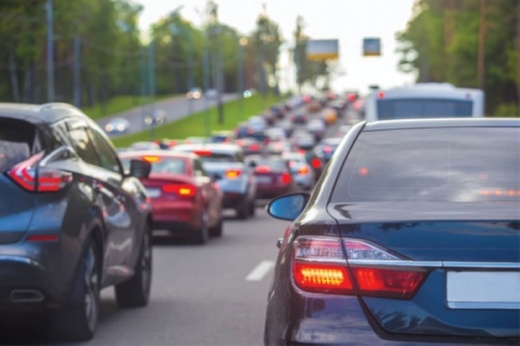TTI released its 2021 Urban Mobility Report June 29 evaluating the 2020 traffic patterns of 494 cities across the U.S. and focusing on 101 urban areas. One of the urban areas was the Greater Houston area, which comprises parts of Harris, Fort Bend, Brazoria, Waller, Montgomery, Chambers, Liberty and Galveston counties, TTI Senior Research Scientist David Schrank said.
According to the report, Houston ranked third in the nation in the number of hours each driver was delayed on the road, second nationally when it came to extra fuel wasted by traffic congestion and fifth nationwide in annual congestion cost per driver in 2020. All were an increase from 2019.
“This was the year where you saw different cities change dramatically,” Schrank said.
When comparing Houston’s traffic data to its own from 2019, the delays and congestion costs improved. Drivers traveled fewer hours in 2020 than the year before—from 76 in 2019 to 46 in 2020. Annual congestion cost—which is a value of time and fuel spent in delays—also dropped from $1,635 per commuter in 2019 to $1,097 per commuter in 2020, according to the report. Schrank said a big factor in the decrease was due to COVID-19 pandemic shutdowns, which began in mid-March, but affected Houston differently than other large metropolitan areas in the country.
“I think Houston's very diverse economy shows up [in the rankings],” he said. “You have a mix of high tech and manufacturing, or all the energy sector jobs. ... So as things change across the nation, I think the Houston area isn’t as dramatically affected by any one change because of diversity.”
Other factors that played into Houston rising in the national rankings for traffic-related issues was stricter and longer lockdown restrictions put in place by other states that kept drivers off the road in cities, such as Los Angeles, Seattle and San Francisco, Schrank said.
Additionally, continued transportation activity in the Port of Houston as well as other industries, such as petroleum, during the pandemic were also players in keeping Houston’s roads congested with traffic, Schrank said.
Moreover, Houston ranked fourth in the nation in both hours of delay truck drivers saw and annual truck congestion cost, which is not only explained by the need of transporting the goods from those industries, but also the goods needed to reach grocery stores, private residences and businesses, he said.
Despite the national rankings, Schrank said Houston has done a good job in handling traffic-reducing solutions by diversifying its transportation options, which includes freeways, high-occupancy vehicle lanes and public transportation such as the Metropolitan Transit Authority of Harris County's bus routes and METRORail.
“Houston is doing some of the things we have been recommending for decades,” Schrank said.
As COVID-19 restrictions continue to lift across the nation, traffic issues are expected to rise again, Shrank said. How long it takes to reach 2019 levels and surpass them, however, TTI officials are unsure. Factors, such as the rise of teleworking, the economy, different job industries and even tourism will play a role, he said.
Regarding Houston specifically, Schrank said the city should continue approaching congestion alleviation in different ways, including using technologies to help manage traffic congestion and get information, such as car accidents, stalled vehicles and road work, out to drivers faster.
“Don’t settle on one type of solution, and keep in mind that some solutions are quicker to implement,” Schrank said.





